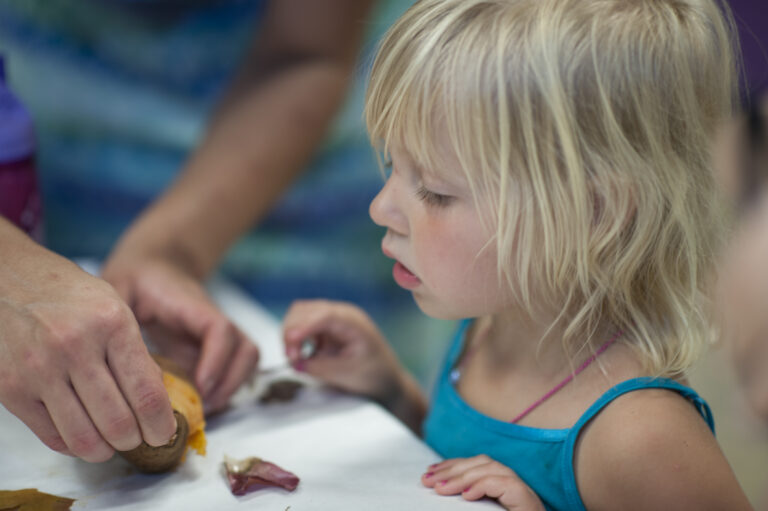[et_pb_section fb_built=”1″ _builder_version=”3.22″][et_pb_row column_structure=”3_5,2_5″ _builder_version=”4.0.4″ background_size=”initial” background_position=”top_left” background_repeat=”repeat” hover_enabled=”0″][et_pb_column type=”3_5″ _builder_version=”3.25″ custom_padding=”|||” custom_padding__hover=”|||”][et_pb_text _builder_version=”4.0.4″ background_size=”initial” background_position=”top_left” background_repeat=”repeat” hover_enabled=”0″]
Cooking and gardening curriculum have become a large part of early childhood development research and program planning. These programs have been linked to improving dietary habits and nutrition knowledge.
[/et_pb_text][/et_pb_column][et_pb_column type=”2_5″ _builder_version=”3.25″ custom_padding=”|||” custom_padding__hover=”|||”][et_pb_image src=”http://www.kidzuchildrensmuseum.org/wp-content/uploads/2019/11/16_0705-Com-Kidzu-Market-13.jpg” align=”center” _builder_version=”4.0.4″ transform_origin=”48%|6%” hover_enabled=”0″][/et_pb_image][/et_pb_column][/et_pb_row][et_pb_row _builder_version=”4.0.4″][et_pb_column _builder_version=”4.0.4″ type=”4_4″][et_pb_text _builder_version=”4.0.4″ hover_enabled=”0″]
In a study based within four elementary schools in Los Angeles, California, researchers studied the effect of adding cooking, nutrition, and garden learning sessions to their after-school programs. Part-time garden and nutrition educators were brought in to teach lessons that included topics such as garden to table eating, real food vs. packaged food, and the importance of eating together as a family. After the 12-week after-school program, the children were better able to identify vegetables, had improved gardening and nutrition knowledge, and reported being more likely to garden at home.1
[/et_pb_text][/et_pb_column][/et_pb_row][et_pb_row _builder_version=”4.0.4″][et_pb_column type=”4_4″ _builder_version=”4.0.4″][et_pb_gallery gallery_ids=”35829,35831,35830″ gallery_orderby=”rand” fullwidth=”on” _builder_version=”4.0.4″ animation_style=”zoom”][/et_pb_gallery][/et_pb_column][/et_pb_row][et_pb_row _builder_version=”4.0.4″ background_size=”initial” background_position=”top_left” background_repeat=”repeat”][et_pb_column type=”4_4″ _builder_version=”3.25″ custom_padding=”|||” custom_padding__hover=”|||”][et_pb_text _builder_version=”3.27.4″ background_size=”initial” background_position=”top_left” background_repeat=”repeat”]
One of the most important aspects of nutrition programs is the exposure to novel foods, such as different types of vegetables, protein sources other than meat, and healthy forms of sugar. Creating positive experiences with these types of food is a proven way to decrease children’s reluctance to eating those foods at meals.
Researchers at the Basque Culinary Center in Spain concluded that, “involving children in cooking activities also increases familiarity and creates positive experiences with novel foods.” Children are more likely to enjoy unfamiliar foods if they are a part of the cooking process. Diversifying a child’s diet and involving them in cooking activities can have long lasting effects such as reduced risk of obesity, increased nutrition throughout their lives, and overall better health outcomes. 2
[/et_pb_text][/et_pb_column][/et_pb_row][et_pb_row column_structure=”2_3,1_3″ _builder_version=”3.25″ background_size=”initial” background_position=”top_left” background_repeat=”repeat”][et_pb_column type=”2_3″ _builder_version=”3.25″ custom_padding=”|||” custom_padding__hover=”|||”][et_pb_text _builder_version=”4.0.4″ background_size=”initial” background_position=”top_left” background_repeat=”repeat” hover_enabled=”0″]
There are a variety of ways to encourage children to become more active in cooking and gardening at home. Encouraging children to add ingredients, assemble meals, and read ingredients or recipes is a great way to build basic skills in the kitchen. These skills also help young children explore their senses and understand what they are eating. Being in the kitchen with children is a great way to boost their confidence! Working together as a team can provide them with opportunities to gain a sense of accomplishment and pride in what they have made. Having a small family garden can teach children the origins of their food and how their environment can provide so much for them. 3
[/et_pb_text][/et_pb_column][et_pb_column type=”1_3″ _builder_version=”3.25″ custom_padding=”|||” custom_padding__hover=”|||”][et_pb_image src=”http://www.kidzuchildrensmuseum.org/wp-content/uploads/2019/11/16_0621-Com-Kidzu-Cooking-111-1.jpg” align=”center” _builder_version=”4.0.4″ transform_scale=”102%|102%” transform_origin=”46%|20%” hover_enabled=”0″][/et_pb_image][/et_pb_column][/et_pb_row][et_pb_row _builder_version=”3.25″ background_size=”initial” background_position=”top_left” background_repeat=”repeat”][et_pb_column type=”4_4″ _builder_version=”3.25″ custom_padding=”|||” custom_padding__hover=”|||”][et_pb_text _builder_version=”4.0.4″ background_size=”initial” background_position=”top_left” background_repeat=”repeat” hover_enabled=”0″]
Overall, cooking and gardening education has the ability to change young children’s dietary habits and their perception of food and healthy living. Encouraging sensory learning, boosting confidence, and instilling the importance of healthy living all have substantial impacts on the overall development of children’s minds and bodies.
Sources:
- “LA Sprouts: A 12-Week Gardening, Nutrition, and Cooking Randomized Control Trial Improves Determinants of Dietary Behaviors.” By Jaimie N. Davis, PhD; Lauren C. Martinez, MPH; Donna Spruijt-Metz, PhD; Nicole M. Gatto, PhD. Published October 2015.
- “Involving children in cooking activities: A potential strategy for directing food choices toward novel foods containing vegetables.” By Xavier Allirot, Noelia da Quinta, Krithika Chokupermal, Elena Urdaneta. Published April 2016.
- “Cooking with Preschoolers”
https://kidshealth.org/en/parents/cooking-preschool.html
[/et_pb_text][/et_pb_column][/et_pb_row][/et_pb_section]

